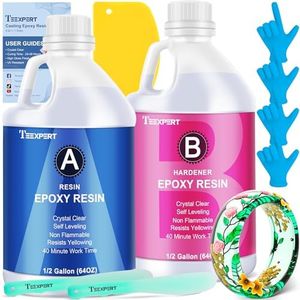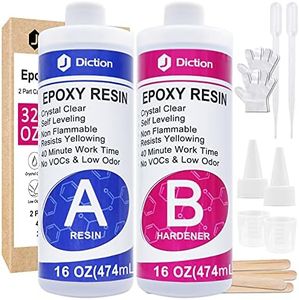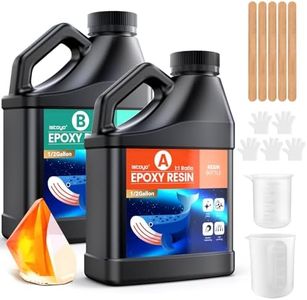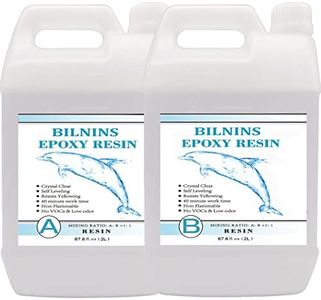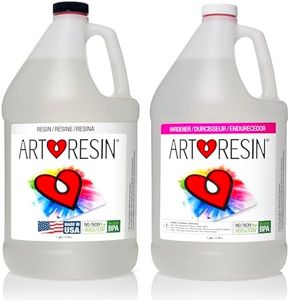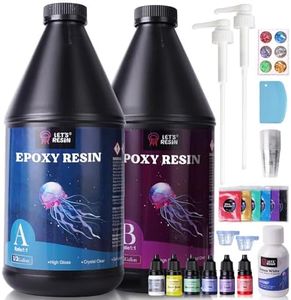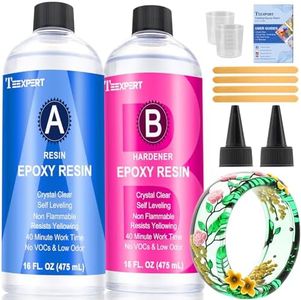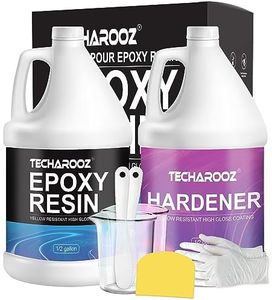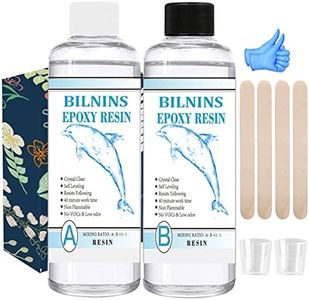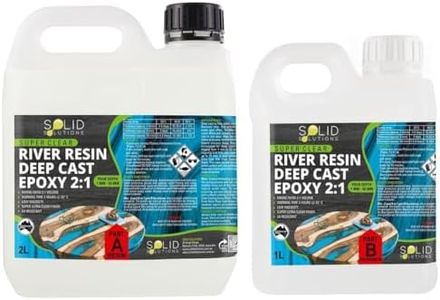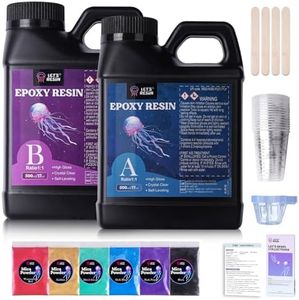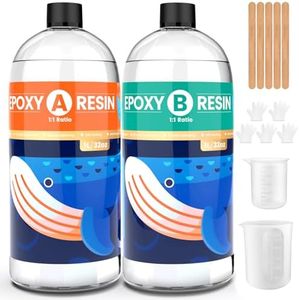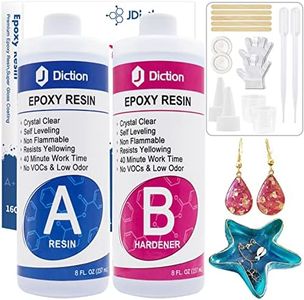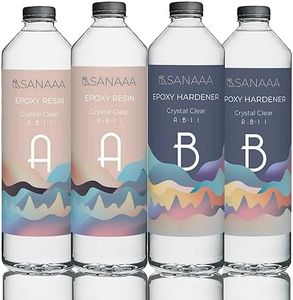We Use CookiesWe use cookies to enhance the security, performance,
functionality and for analytical and promotional activities. By continuing to browse this site you
are agreeing to our privacy policy
10 Best Cheap Clear Epoxy Resin
From leading brands and best sellers available on the web.Buying Guide for the Best Cheap Clear Epoxy Resin
Choosing the right epoxy resin can make a big difference in your project's outcome, especially if you want clear, durable results on a tight budget. Whether you’re crafting, sealing, or coating, understanding what to look for helps you avoid disappointment and wasted materials. Start by thinking about what you want to achieve—like coating a tabletop, making jewelry, or encapsulating objects—since different needs require different resin qualities. Knowing the key specs will help you balance clarity, curing time, ease of use, and lasting results for your specific application.Clarity/TransparencyClarity refers to how see-through or glass-like the cured resin appears. It’s crucial for art, jewelry, or any project where seeing objects or inclusions beneath the surface matters. Epoxy resin clarity ranges from crystal clear to slightly cloudy; lower-cost options may have minor yellowing or haze. For decorative uses or deep pours, prioritize the clearest option within your reach. If the look is not as important, a slight cloudiness may suffice, especially in practical or utilitarian applications.
Curing TimeCuring time is how long it takes for the resin to harden after mixing. Fast-curing resins can be ready in a few hours, while slow-curing formulas may take a day or more. Faster cure is great for quick projects or layering, but might introduce more bubbles or imperfections. Slower curing typically results in fewer bubbles and a smoother finish. Match the cure time to your workflow: if you’re okay waiting for better results, a slower curing resin may suit you, but for speed and convenience a faster option may be better.
Viscosity (Thickness)Viscosity describes how thick or runny the resin is when mixed. High-viscosity resins are thicker and best for doming or coating surfaces without too much dripping. Low-viscosity resins flow more easily, ideal for deep casting or getting into molds with fine details. Pick a thicker resin for surface finishes to minimize runoff. For deep pours or intricate molds, a thinner, low-viscosity resin will fill gaps and bubbles better.
UV ResistanceUV resistance relates to how well the resin maintains its clarity and resists yellowing when exposed to sunlight. Lower-priced resins often have less protection and may yellow faster outdoors or in bright indoor light. If your project will be displayed in sunlight or a well-lit room, choosing an option with added UV blockers is best. For projects kept in shade or used indoors, UV resistance may be less critical.
Working Time (Pot Life)Working time, or pot life, is how long you have to pour and manipulate the resin after mixing before it starts to set. Shorter working times mean you must work quickly, which can be challenging for beginners or complex projects. Longer working times allow more time to pour, arrange items, or remove bubbles. Choose a longer working time if you’re new to resin or if your project needs careful placement or adjustments.
Odor and SafetyEpoxy resins can emit fumes during mixing and curing, some stronger than others. Lower-cost resins may have a more noticeable chemical smell or require more attention to proper ventilation. If you’re sensitive to odors or working indoors, look for a low-odor or ‘no VOC’ formula and ensure your workspace is ventilated. Consider this spec if you have respiratory sensitivities or are working around others.
